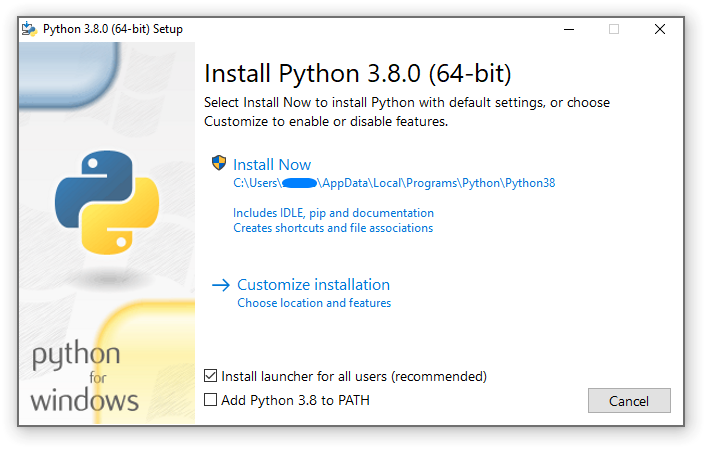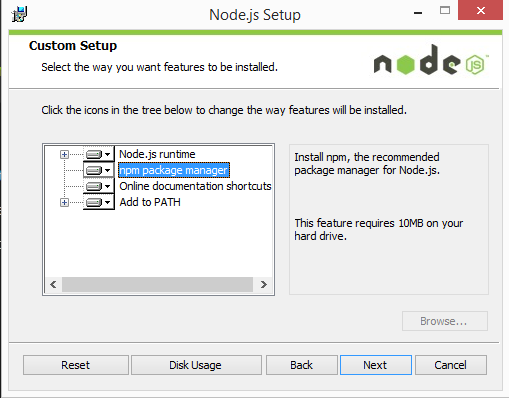-
-
Notifications
You must be signed in to change notification settings - Fork 5.5k
New issue
Have a question about this project? Sign up for a free GitHub account to open an issue and contact its maintainers and the community.
By clicking “Sign up for GitHub”, you agree to our terms of service and privacy statement. We’ll occasionally send you account related emails.
Already on GitHub? Sign in to your account
Incorporate an add to PATH option in Windows Inno Setup installer #36518
Conversation
|
Rust adds to path a whole bunch of I'm inclined to leave it selected by default, because beginners often struggle with 'adding to path'. I'm also happy to hear others on this. |
|
If there aren't any objections can I merge this? |
|
One remaining question for me, what will it do if Julia already is on the path? |
|
That's a separate issue, I'd like to tackle in a different PR. This PR only adds it to the end of the path list, and the corresponding uninstaller will remove it from path list. For the "update" strategy. Right now the simplest method that I got to work, is for the installer to check if Julia is already installed and if it is, the installer will then ask you if you want to remove the previous version. Removing the previous version will then remove it from the path and then the new installation will add the new version to path. |
|
I posted a comment regarding that in #34495 (comment) |
|
I just read over #34552 (comment) It's an interesting proposal. Can you explain in more detail how the
|
The idea was that the "exported_binaries" directory will contain all files that shall be in the reach of the path variables. So right now, there probably will only be a script which leads to the right executable. So right now the idea might sound weird and unnecessary. The idea is that it'll establish a place where we/the Julia compiler later can put the "exported as binary" programs to once binary export lands. EDIT: I had some quick thoughts about it again and we could drop the "binaries" component in the name. Then we could plausibly use that directory as output for some "runnable scripts" package which accepts a julia script and a name to create a batch file in that directory which executes the provided script. In summary I guess the language has a lot of potential to scale into such a central established script/program place. To come back to this post's topic, the "julia" command could be the very first citizen of that new directory. That Script will just redirect the call to an actual Julia executable. Ofc, highly customizable, as we all like it. In that far future with Julia-compiled programs, running something via Julia and running something made by julia would become indistinguishable. Since both will have entry points in that directory. |
|
I kinda like it but it only holds information for those people who also know what the path is anyway. So I'd rather replace it with a suggestion for those who don't know what it means |
|
Doesn't that explain it well enough? What to do you think it should say, without being too lengthy. Looking at other languages e.g. Python, GIT they do a much worse or no description at all. |
|
I mean that I'm actually very sure that there are a lot of people who don't even know what the command prompt is. But those who do don't need an explanation. |
|
? Maybe replace command prompt with terminal |
|
I have a salty moment right now which makes me think whether "if you don't know if you need it, ask the person who asked you to install it" would have an appropriate amount of humour 😇😂 |
|
True best to remove It. Merging this PR after updating it with an unchecked default. |
|
I think this option's only use would be for people who write julia code for other people since it helps setting up script based automation. that brings me to another idea which is entirely independent of this issue:
|
|
@rapus95 please look at #36672 it will be the future installer and basically with Right now this is an incremental improvement and it can help as a stop-gap solution for newbs who don't want to go through the hassle of adding to PATH and just listen to the instructor that tells them to select this option and get going. |
Erm now I'm confused, thinking |
|
No problem! Your input is appreciated |
|
Should this really have been merged before #36588 is done? This now adds a lot of DLLs onto the I had always assumed that if something gets added to the I should say that I'm not super clear how important that policy actually is, but it was for a long time here and I'm just surprised that it was given up without some discussion of what has changed? |
|
The "ADD to Path" option is unchecked by default. |
I'm not sure why that should change whether this should get merged before or after. The option is by default unchecked. This is still early in 1.6, so after staticfloat's PR the situation will be improved w.r.t to the dlls getting added to path (granted I personally haven't had this issue, but understand it's possible). If the path that we need to add to PATH does indeed need to change, it will be trivial for me to update the location that get's added to Path. So no I don't find it an issue when this got merged. |
|
Tbh I always just put julia/bin to PATH w/o caring about the other files... Now I at least can make that happen w/o having to manually change the environment variables. Whether that's a good idea IMO is out of scope of the capability to do it. So in my opinion that's just a feature for convenience which makes it independent from the other issue. |



This adds an unchecked by default option to add the Julia bin directory to path on Windows for the installer.
The code handles adding the bin to path and also automatically removes the path upon uninstallation.
Part of: #34495